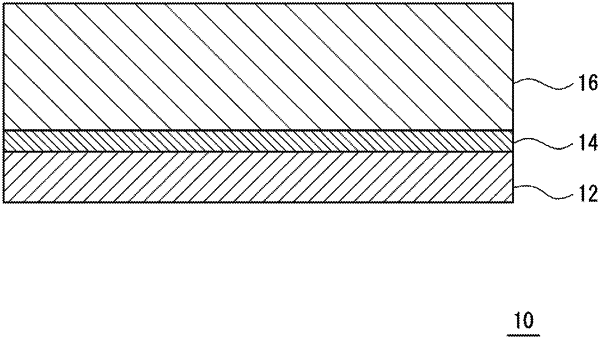| CPC G03F 7/033 (2013.01) [B41N 1/00 (2013.01)] | 5 Claims |

|
1. A flexographic printing plate precursor, comprising:
a photosensitive layer, comprising (A) a water-dispersed latex, (B) a millable rubber, (C) a surfactant, (D) photopolymerizable compounds, and (E) a photopolymerization initiator,
wherein the (D) comprises following (d1) to (d3), and the (d1) is a compound represented by formula (1) and the (d2) is a compound represented by formula (2),
(d1) a photopolymerizable compound of a chain structure having no cyclic structure,
(d2) a monofunctional photopolymerizable compound having a cyclic structure, and
(d3) a bifunctional photopolymerizable compound having a cyclic structure, wherein the (d3) is tricyclodecane dimethanol diacrylate or tricyclodecane dimethanol dimethacrylate,
 in the formula (1), R1 represents a hydrogen group or a methyl group, R2 represents a hydrogen group or a methyl group, and R3 represents a linear or branched hydrocarbon group having a carbon number of 4 to 12,
 in the formula (2), R4 represents a hydrogen group or a methyl group, and R5 represents a cyclic structure composed of hydrocarbon or a cyclic structure composed of carbon, hydrogen and oxygen,
wherein a total amount of the (d1) to (d3) is within a range of 7.5 to 19 mass % with respect to an entire amount of the photosensitive layer, a content of the (d1) is within a range of 38 to 67 mass % with respect to the total amount of the (d1) to (d3), a content of the (d2) is within a range of 12 to 46 mass % with respect to the total amount of the (d1) to (d3), and a content of the (d3) is within a range of 9 to 46 mass % with respect to the total amount of the (d1) to (d3).
|